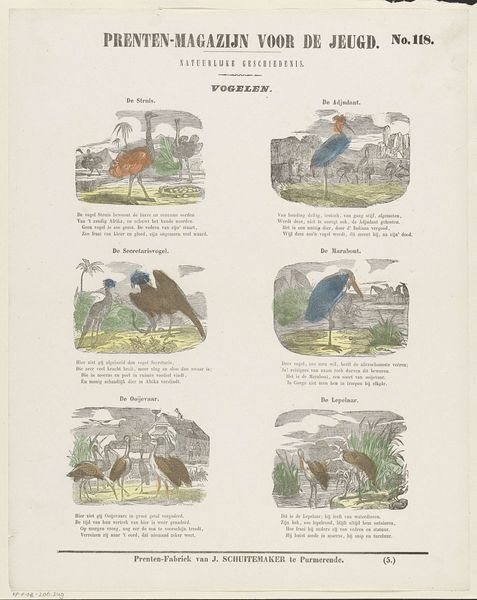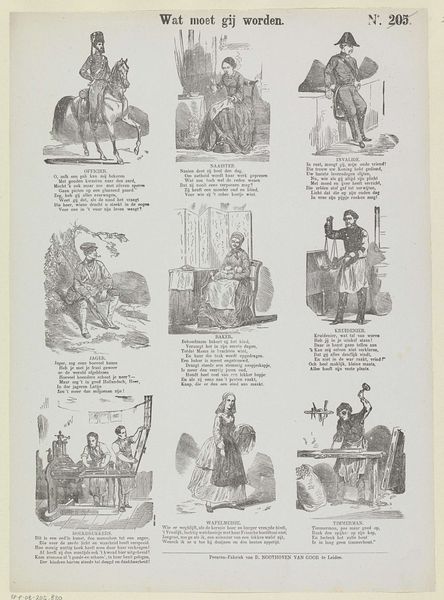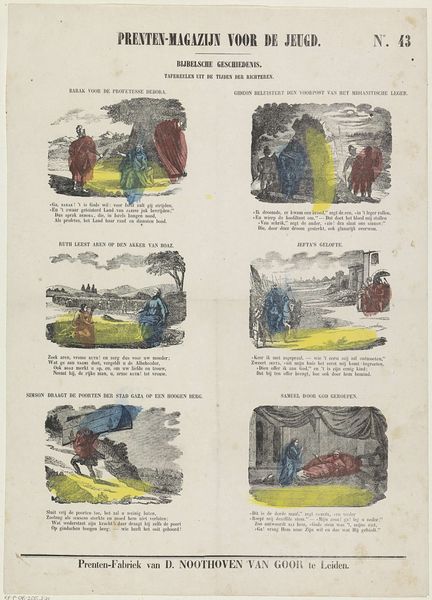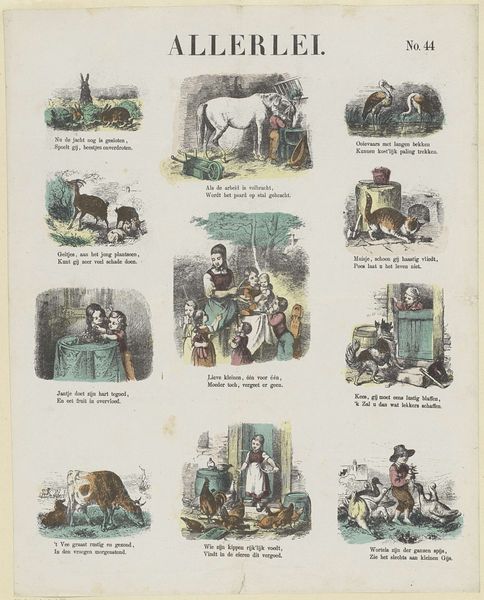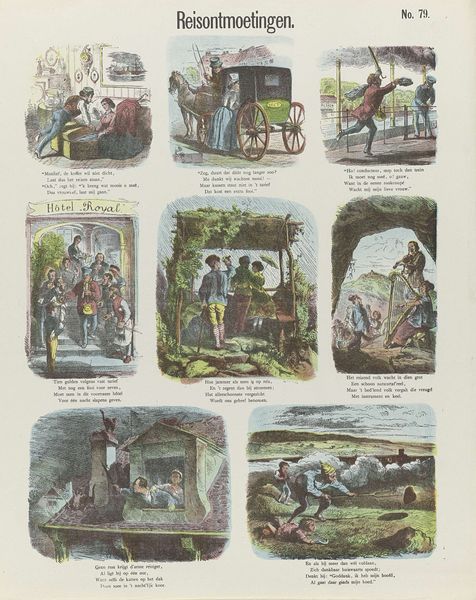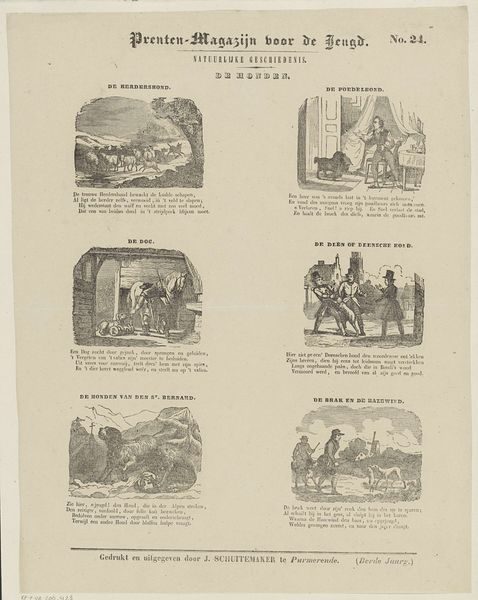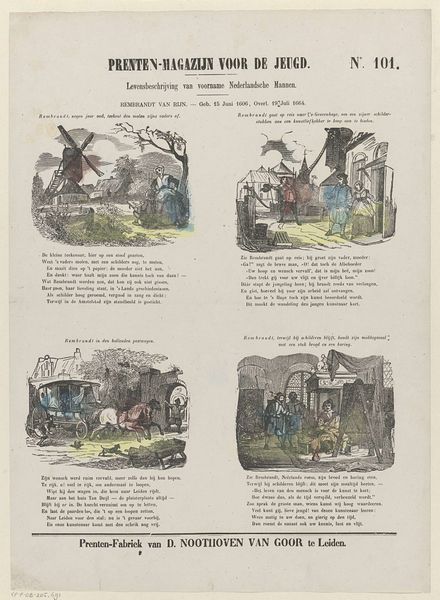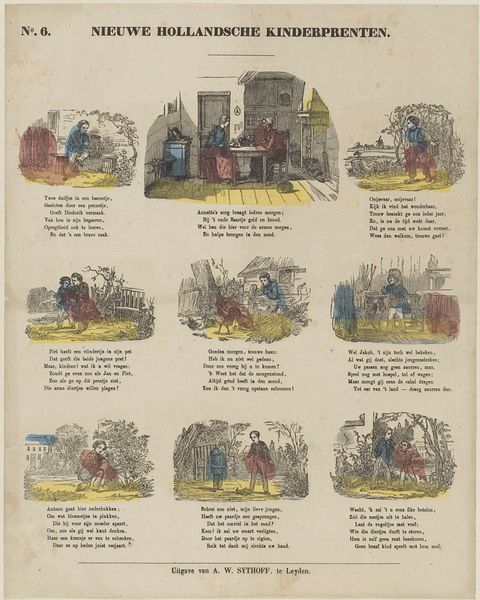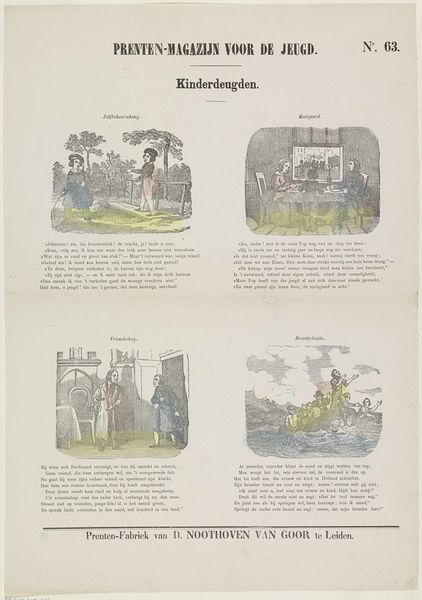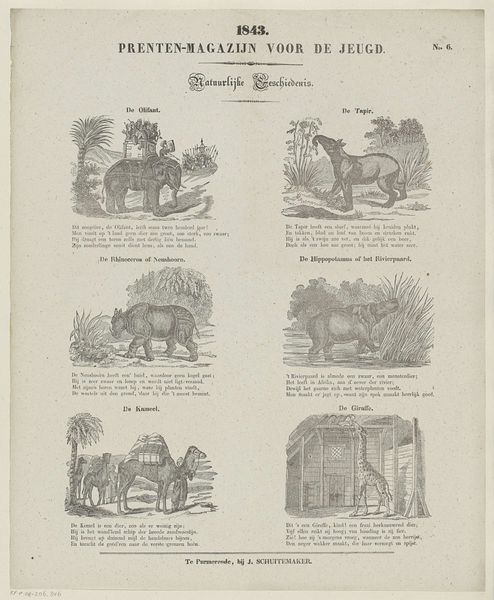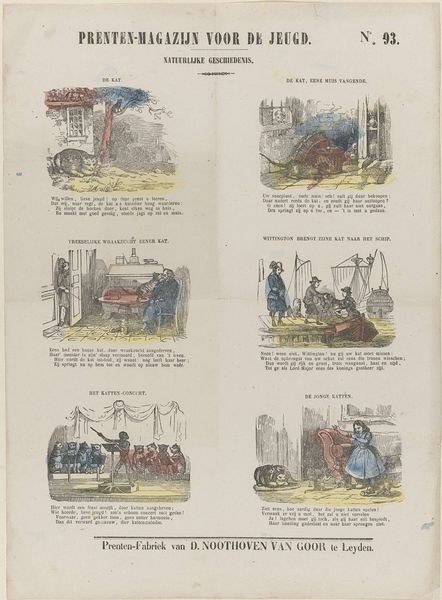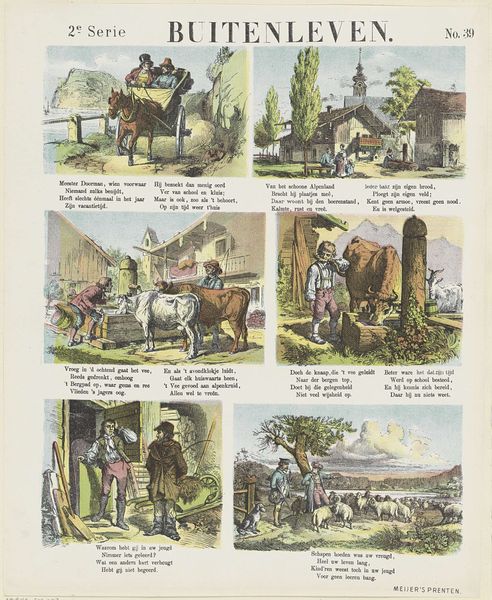
lithograph, print
#
animal
#
dutch-golden-age
#
lithograph
# print
#
folk-art
#
genre-painting
#
realism
Dimensions: height 419 mm, width 300 mm
Copyright: Rijks Museum: Open Domain
Editor: This lithograph, “Tamme dieren,” or "Domestic Animals" created sometime between 1850 and 1881 by Dirk Noothoven van Goor, feels like a page from a children's book. There are six little vignettes. I find the rendering rather charming and quaint. What stories do you see unfolding within these tiny frames? Curator: Charming and quaint hits the nail on the head. It makes me think about simpler times, doesn't it? It feels almost… nostalgic. Each image offers a snippet of rural life, showcasing the relationships between humans and animals. I think it speaks volumes about the 19th-century Dutch perspective on nature and labor. What details strike *you* as particularly interesting? Editor: I'm intrigued by how each animal seems to have a specific purpose, working alongside humans. Is that reflective of the social or economic values of the time? Curator: Absolutely. The lithograph subtly promotes the virtues of hard work, diligence, and harmony with nature. Each animal embodies a specific aspect of that – the cow providing sustenance, the sheep providing wool, the horse aiding in transportation and field work. Each is in symbiotic servitude to the land. Isn’t that something? Editor: That really puts the artwork in perspective! It’s fascinating how much can be conveyed through such simple scenes and a subtle, yet present propaganda. Curator: Precisely. It shows us that even seemingly straightforward depictions of everyday life can offer profound insights into a culture’s values and beliefs. We must learn to decode what is really being shown versus simply seeing the animals at work.
Comments
No comments
Be the first to comment and join the conversation on the ultimate creative platform.
